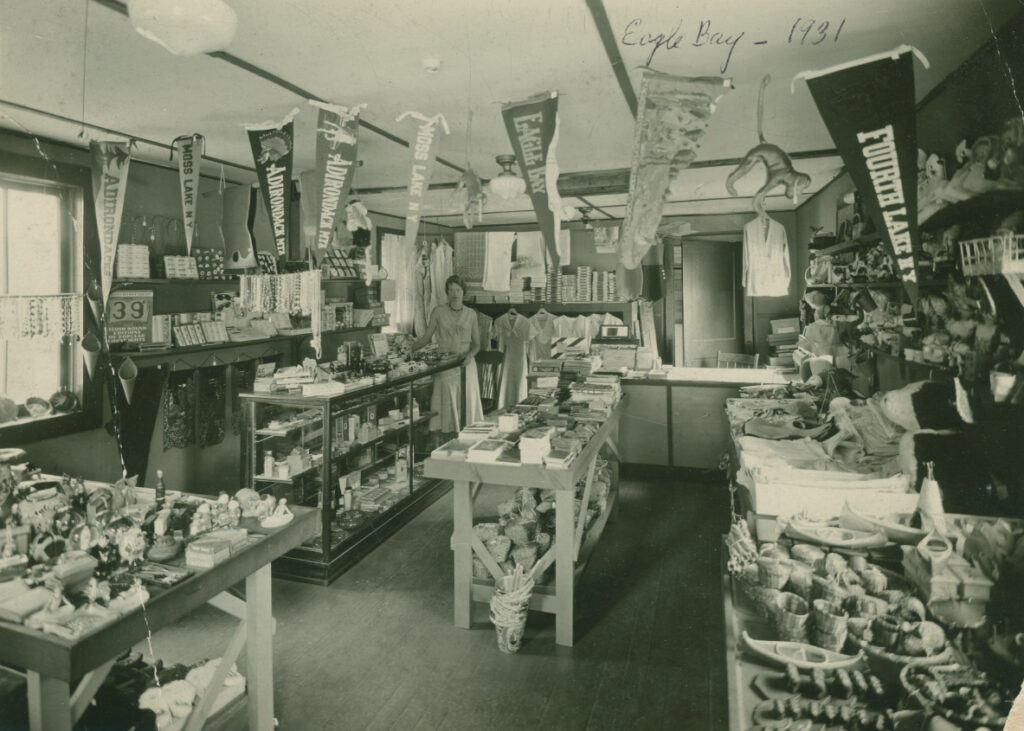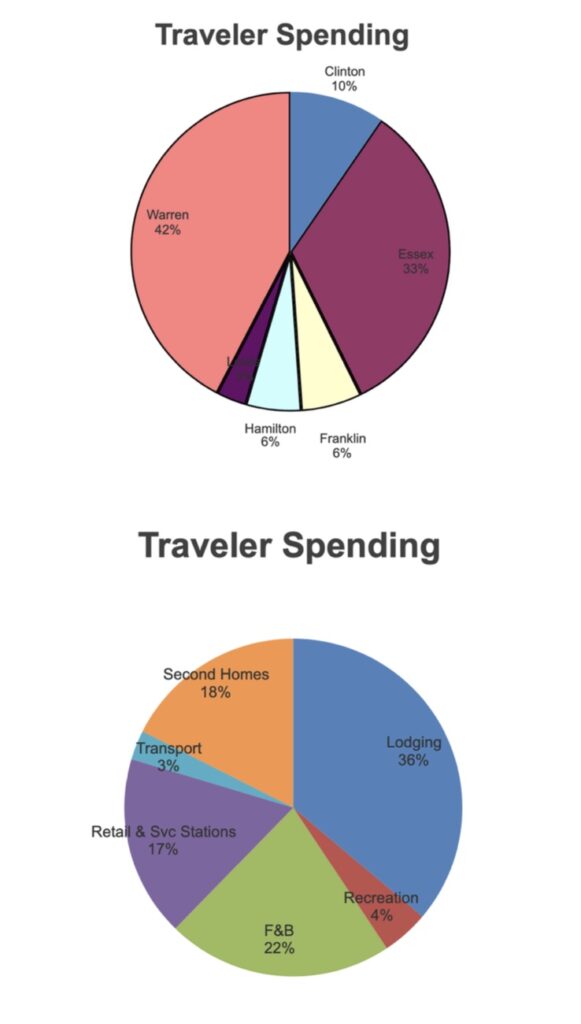Positive Effects
Recreational Revenue.
Adirondacks visitors could now hike without the help of guides, as equipment for hiking and camping could now be rented at tourism businesses, and maps were being supplied by state and local tourism organizations (Porter, 133). Thus, it is no surprise that the economy of the park benefitted from hiking increasing in popularity. The state viewed seasonal trade brought about from tourism as a huge contribution to the development and success of the park:
… the management of this business employment is furnished to thousands of people, trade is stimulated by the large purchase of supplies, building operations increase the demand for skilled labor, while the railroad and steamboat lines reap the benefits occurring from the large passenger and freight traffic.
The NY State Forest, Fish, and Game Commission
The state’s contribution to trail development in the Adirondacks helped make hiking even more accessible to residents outside of the park, as discussed under State Involvement. Thus, the year round residents of the park obtained most of its revenue from providing recreational services to visitors. For hiking, this meant providing places for tourists to stay the night, running restaurants so hikers can eat before their long treks, and providing maps/guidebooks for trail-goers. By the 190s, the Adirondack economy had become extremely reliant upon tourist dollars.

https://www.northcountryatwork.org/archive-items/irene-mayer-inside-the-annex-gift-shop-in-eagle-bay/
This reliance continued today. In a 2018 report from the group Tourism Economy that looked at the impact of tourism on the Adirondack region, they found that tourism is a $1.5 billion industry that brings in over 21.000 jobs. Travelers spend $1.5 billion in the park across a variety of sectors, with lodging and food comprising over half of the spending total.
Although there are no definitive statistics about the percentage to which hiking contributes to this spending and labor force in the Adirondacks, it is safe to say that many tourists coming to the park are drawn to this recreational activity. Thus, the appeal and popularity of hiking in the Adirondacks is what brings in a lot of this revenue. One example is during Peak Foliage Season, as thousands of hikers flock to the park to see the beautiful colors.

Negative Effects
Housing Crisis.
The increase in tourism that hiking brings for the park has led to some negative effects for year-round residents. As hiking attracts more visitors to the Adirondacks, more tourists begin moving to the region or at least buying second homes. As a result, sale prices have gone up at least 30%, and residents looking for a rental home are struggling to find anything affordable.

Rent prices have soared in the Adirondacks, with counties seeing rates increase each year compared to the last (Platsky). Furthermore, more park visitors has led to an increase in demand for places these hikers can stay the night or for multiple days. Thus, there are now lots of short-term rental units being built in the region, which makes it harder for permanent Adirondack residents to find long-term rentals since those are not seen as profitable compared to the short-term rentals. One resident describes her awful experience trying to find a place to live for her job as a teacher in the Adirondacks. She describes it as “a snowball of moving once a year,” as landlords are either constantly raising their prices or selling their properties and forcing her to constantly move (DeSocio).
Community Debates Over Conservation.
The state’s involvement in the development of hiking trails ties to the timeless debate about the Adirondacks and whether its nature should be preserved or used for recreational purposes. As NYS invested more time and resources into making trail systems for the region, the hiking industry flourished in the Adirondacks and attract millions of tourists each year. However, a huge amount of people annually trekking on the same trails, many of which are over fifty years old, has negative side effects. As described in great detail under “Trail Conservation Today,” environmental problems and safety issues have arisen due to overuse of trails by hikers. What to do about this issue has caused strife within the Adirondack community, especially regarding whether or not hiking permits should be implemented to control the amount of hikers in the region.
One resident thinks that they’re a great idea.
Limits at AMR this summer, combined with a planned shuttle, will help relieve some of the pressure on state Route 73 and its shoulders from Chapel Pond all the way to the Adirondack Loj Road.
We want visitors from Brooklyn, Binghamton and Buffalo to feel welcome. Part of that is giving them a fair shot at getting a parking spot in a popular location. A free online reservation system is more equitable and can help hikers plan.
If our most fragile areas are overrun, so that all sense of solitude is lost and signs of human impact are everywhere, is it really still wilderness?
The Adirondack Almanack
However, other residents are less enthusiastic.
I am concerned about the slippery slope of the AMR limiting access through this contractual, nonvoluntary right of way to access to our forest preserve. More legal issues are at stake here, including tax abatement for the AMR, what constitutes degradation of land and how this is determined, the potential complications between the AMR and the Department of Environmental Conservation, any potential conflicts of interest between individuals or group proponents and the AMR/Ausable Club, as well as the legal right of way itself.
The Adirondack Almanack
Overall, the popularity of hiking and its impacts on the trails themselves has become a topic of contention between neighbors. Should the Adirondack Park restrict the amount of hikers allowed to go up mountains? Or is this an infringement upon the “forever wild” clause? This is only one example of how hiking has become an influential aspect of the park.